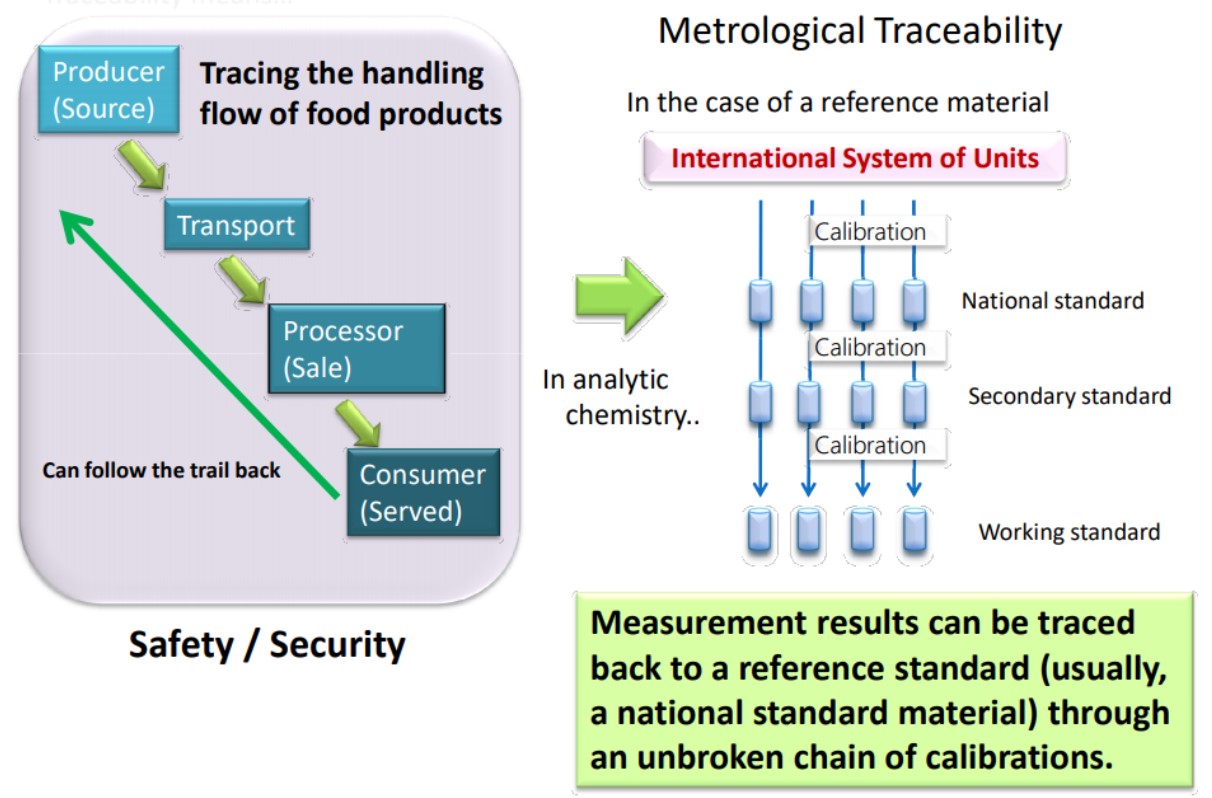Keyword for Reliability of Analysis Results: Traceability
Issue 5
Vol. 4 introduced the measurement of the absolute amount (content) of a target component as one of the ways to use quantitative NMR. It was explained that qNMR can be used to obtain SI-traceable analysis results by performing the appropriate procedures and using quantitative reference materials with an assured metrological traceability. This time, we will discuss traceability in more detail.
Traceability
Have you been hearing the term “traceability” used a lot recently? If you perform a search of “traceability” on-line, you will get a huge number of hits, and most of them will probably be related to food products. As a term related to safety and reliability, “traceability” refers to the tracking of information about a product, such as the producer and production information.
Consumers are able to track the production of the items they consume, providing a way to confirm that they are from reliable sources. The concept of traceability has also been introduced in the world of analytic chemistry. To differentiate it from the traceability of food products, it is called “metrological traceability”.

Metrological Traceability
The basis for reliability of a food product is the producer. But what will be the basis for analytic chemistry?
The answer is a “standard”. This is easiest to visualize by considering a weight standard.
Balances are calibrated using calibration weights so that 1 kg is the same amount of a material anywhere in the world. The calibration weights are based on an actual standard kilogram weight (international prototype kilogram). The calibration weights that we have at hand go through several documentable stages of comparison to the weight standard, and the results obtained from a balance calibrated using those calibration weights are said to be “traceable” back to the weight standard, thereby achieving an assurance of the reliability.
So, how does this work in NMR? In this case, the quantitative reference material that is used during the analysis corresponds to the calibration weights. Traceability is ensured by maintaining an unbroken chain from a reference standard (often a national standard) to the quantitative reference material. The analytical results obtained when using a traceable NMR that are equivalent to national standard substances are becoming widely available, so ensuring the traceability of qNMR analysis results is not difficult. However, when performing quantitative NMR with assured traceability, it is necessary to consider the sample preparation and optimization of the measurement conditions.
For those who want to know more, check the following
JEOL News Volume 47, 2012 “Realization of an Innovative Metrological Traceability Using the Quantitative NMR Method”
Are you a medical professional or personnel engaged in medical care?
No
Please be reminded that these pages are not intended to provide the general public with information about the products.

